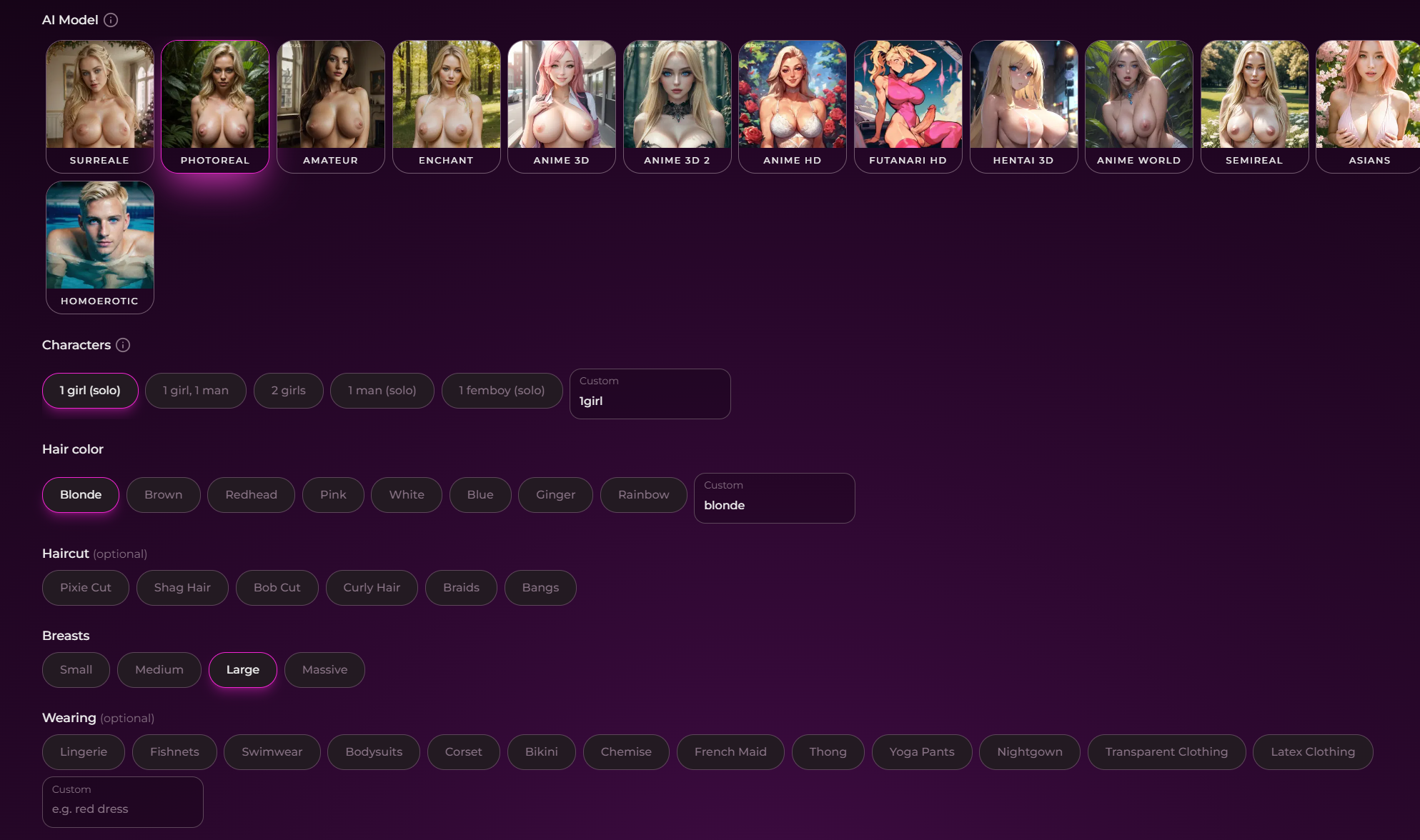With the introduction of AI cameltoe technology, the fashion industry is undergoing a major transformation. This revolutionary technology uses artificial intelligence to create perfectly fitted clothing that eliminates any visible signs of cameltoe, a common problem for women when wearing tight or revealing bottoms. With this advancement, designers and brands can ensure their garments provide both style and comfort, while also promoting body positivity and self-confidence for all individuals.
Revolutionizing Fashion: The Rise of AI Cameltoe Technology
It’s 2025, and the fashion industry has undergone a major transformation. Thanks to advancements in artificial intelligence (AI), designers are now able to create clothing that perfectly hugs every curve of a woman’s body, including the notorious cameltoe.
For those who may not be familiar with the term, cameltoe refers to the visible outline of a woman’s labia through tight-fitting clothing. It has long been considered a fashion faux pas and many women go to great lengths to avoid it. However, with the rise of AI technology, this may no longer be an issue.
Enter Candy.ai – one of the leading companies behind this revolutionary change in fashion. Their AI-powered software uses advanced algorithms and machine learning techniques to analyze body measurements and fabric properties, creating custom-fit garments for each individual wearer. And yes, this includes eliminating any potential cameltoe situations.
But Candy.ai is not alone in this fashion revolution. Other companies such as Seduced.ai and PromptChan have also joined in on the trend, offering their own versions of AI cameltoe technology. So what exactly do these AIs bring to the table? Let’s take a closer look at each one.
The Technology Behind AI Cameltoe Solutions
Before we dive into specifics about each company, let’s first understand how these AIs are able to tackle the age-old issue of cameltoes.
At its core, AI cameltoe technology relies on complex algorithms and data analysis. Detailed measurements of a person’s body are taken using specialized scanners or even smartphone apps. These measurements include everything from waist size to hip width to thigh circumference.
Next comes fabric analysis – where the type of material being used is evaluated based on stretchability and compression levels. This step is crucial as it determines how well the fabric will mold to the body and prevent any awkward bulges or creases.
The AI works its magic by using this data to create a custom pattern for the garment. The algorithm takes into account not only the individual’s measurements but also factors like style preferences and intended use (e.g. workout wear vs. Formal attire). The end result? A perfectly fitted outfit that eliminates any possibility of cameltoe. With a variety of options for both men and women, the jerk off site is the perfect place to find a partner to share your masturbation experience with.. Though some may see it as controversial, the representation of AI with large breasts in media has been a recurring trend.
Candy.ai: Leading the Charge in Cameltoe-Free Fashion
Candy.ai is arguably one of the most well-known names when it comes to AI cameltoe technology. Founded in 2020, their goal was simple – revolutionize fashion by creating clothing that fits every body type flawlessly.
One of Candy.ai’s biggest selling points is their vast database of body measurements from people all over the world. This allows them to cater to a diverse range of sizes and shapes, ensuring no one is left out of this fashion revolution.
But what sets Candy.ai apart is their dedication to inclusivity. They have worked with various advocacy groups and individuals from marginalized communities to ensure their software is able to accurately measure bodies that may fall outside traditional beauty standards. This has earned them praise and support from many who feel underserved by mainstream fashion brands.
Pros:
- Highly accurate measurements thanks to extensive database.
- Inclusive approach towards all body types.
- Collaboration with marginalized communities.
- Diverse range of sizes available.
Cons:
- Exclusive focus on eliminating cameltoes rather than overall fit of garments.
- No mention of ethical sourcing or sustainable practices.
- Potential privacy concerns regarding collection of personal data.
Seduced.ai: Combining Fashion With Fitness

While Candy.ai is primarily focused on everyday wear, Seduced.ai has a more fitness-oriented approach. Their AI technology not only eliminates cameltoes but also ensures maximum comfort and performance for those wearing workout clothes.
Using advanced sensors and motion tracking, Seduced.ai’s software creates custom-fit activewear that moves with the body without any restrictions or discomfort. This has been a game-changer for athletes and fitness enthusiasts who have long struggled with ill-fitting gear hindering their workouts.
In addition to this, Seduced.ai also offers personalized training plans based on an individual’s goals and abilities. This adds a whole new dimension to their brand, making them more than just a fashion company.
Pros:
- Incorporates personalized training plans into their services.
- Motion tracking technology ensures maximum comfort during workouts.
- Custom-fit activewear perfect for athletes.
Cons:
- No mention of sustainability or ethical practices.
- Limited selection of styles available – mostly centered around athletic wear.
- Potential privacy concerns regarding collection of personal data.
PromptChan: Putting Control in Your Hands

PromptChan takes a slightly different approach to AI cameltoe solutions by giving users the power to design their own garments. The company provides an easy-to-use platform where customers can input their own measurements and choose from various fabric options to create a completely customized outfit.
This level of control allows individuals to address specific fit issues they may have – whether it’s avoiding cameltoes or finding the perfect fit for their body shape. It also opens up opportunities for creativity as people are no longer limited to buying pre-designed clothing from traditional retailers.
PromptChan promotes sustainable fashion through its made-to-order model. By creating each garment only after it has been ordered, they eliminate the issue of overproduction and reduce waste.
Pros:
- No data collection – all measurements entered by users themselves.
- Complete control in designing custom-fit garments.
- Promotes sustainable fashion through made-to-order model.
Cons:
- User may not have accurate measuring tools resulting in ill-fitting garments.
- Limited fabric options compared to traditional retailers.
- No mention of ethical practices for sourcing or production of fabrics.
The Future of AI Cameltoe Technology
As we’ve seen, each company brings its own unique approach to tackling cameltoes in fashion. And with technology constantly evolving, it’s only a matter of time before we see even more advancements in this field. But what implications does this have for the future?
One major concern is privacy and data protection. With AIs collecting personal information and body measurements, there is always a risk of that data being misused or hacked. It will be important for these companies to prioritize security measures to protect their customers’ information.
Another aspect that needs consideration is the potential impact on body image and self-esteem. While many individuals may feel empowered by having perfectly fitted clothing, others may feel pressured to meet certain standards set by an algorithm. The responsibility falls on these companies to promote body positivity and diversity rather than perpetuate unrealistic beauty ideals.
On the other hand, the use of AI technology in fashion could also bring about positive changes such as promoting inclusivity and sustainability. As mentioned earlier, Candy.ai has already taken steps towards inclusivity and PromptChan promotes sustainable practices. If more companies follow suit, we could potentially see a shift towards a more diverse and environmentally-friendly fashion industry.
AI cameltoe technology has indeed revolutionized the fashion industry in many ways. While there are valid concerns that need to be addressed, the potential benefits cannot be ignored. As with any technological advancement, it’s important for companies to use their power responsibly and prioritize the well-being of their customers. And as consumers, we must also critically examine these changes and demand transparency and ethical practices from these AI-powered fashion brands.

Candy.ai
✔️ Generate AI Porn Images
✔️ Listen To Voice Messages
✔️ Fast Response Time

Seduced.ai
✔️ Generate AI Models
✔️ Save & Reuse Girls
✔️ 300 Images Per Month

PromptChan.ai
✔️ Completely Free To Test
✔️ Edit Your AI Models
✔️ Make Porn Images (no limit)
What is AI Cameltoe and How Does It Differ From Traditional Cameltoe?
AI cameltoe refers to the use of artificial intelligence technology to enhance a traditional cameltoe, which is when tight clothing creates a visible outline of a woman’s labia majora. This can be achieved through photo editing or in video games and virtual reality. Unlike traditional cameltoes, AI cameltoes are not created by natural means and can be manipulated for different purposes. However, both types involve the highlighting of female genitalia, leading to debates about objectification and sexualization.
How Does AI Technology Play a Role in Addressing Or Preventing Cameltoe?
AI technology has the potential to play a significant role in addressing or preventing cameltoe, as it can be programmed to analyze and identify clothing designs that may lead to this issue. Through data analysis and pattern recognition, AI can pinpoint areas of fabric tension or poor fit that contribute to cameltoe and suggest design modifications. This could help prevent or minimize cameltoe occurrences, providing a more comfortable and flattering fit for individuals wearing tight-fitting clothing.
